#Oppo Reno 5 Pro specification and review
Explore tagged Tumblr posts
Text
How to Make the Most of Your Mobile Comparisons
When looking for the perfect smartphone, making an informed decision is crucial. With so many options available, knowing how to compare mobile phones effectively can save you from buyer’s remorse.
The best phone comparison methods focus on analyzing key factors like performance, camera quality, battery life, and pricing. Whether you’re browsing a top phone review site or checking mobile phone specifications, understanding the differences between models is key.

Many phones also have phone name variations, which can be confusing. Here’s how to streamline your research and pick the best smartphone for your needs.
Define Your Priorities
Before diving into comparisons, identify what matters most to you. Are you looking for a gaming phone with a powerful processor? A budget-friendly device with long battery life? Or a flagship model with an advanced camera? By setting clear priorities, you can quickly eliminate phones that don’t meet your needs.
Consider factors such as:
Performance: Processor, RAM, and software optimization.
Camera Quality: Megapixels, low-light performance, and video capabilities.
Battery Life: Capacity (mAh), charging speed, and endurance.
Display: Refresh rate, resolution, and brightness.
Build and Design: Material quality, water resistance, and weight.
Use a Reliable Phone Comparison Tool
A best phone comparison tool or top phone review site provides structured insights on different models. These platforms often compare side-by-side specifications, helping you visualize key differences at a glance. Look for sites that offer:
In-depth reviews with real-world testing.
User ratings for a broader perspective.
Benchmark scores for performance analysis.
Detailed spec breakdowns for clarity.
Some trusted sites include GSMArena, PhoneGuideSpecifications, and DeviceDepthReviews, which specialize in breaking down mobile phone specifications clearly.
Compare Models with Similar Price Ranges
One common mistake is comparing a mid-range phone with a flagship device. While it’s good to see what premium models offer, focus on comparing devices within your budget. For instance:
Under $300: Compare phones like Samsung Galaxy A series, Xiaomi Redmi Note, and Realme Narzo.
$500 - $800: Mid-range competitors like Google Pixel A-series, OnePlus Nord, and iPhone SE.
Flagships: Samsung Galaxy S series, iPhone Pro models, and high-end Xiaomi and OnePlus devices.
Check Phone Name Variations
Manufacturers often release the same phone under different names in different regions. For example:
Xiaomi Redmi K60 (China) = Poco F5 Pro (Global)
Samsung M14 (India) = Samsung A14 (Europe)
Oppo Reno 10 (China) = OnePlus Nord CE 3 (India)
Knowing these variations helps avoid confusion and ensures you get the right version.
Read Expert and User Reviews
While mobile phone specifications provide an overview, real-world experience matters. Professional reviewers test features like camera quality, gaming performance, and battery endurance under actual usage conditions. Meanwhile, user reviews highlight long-term durability, software updates, and possible issues.
Where to Check Reviews?
YouTube tech channels (e.g., Marques Brownlee, GSMArena)
Top phone review sites like PhoneGuideSpecifications
Reddit and forums for unbiased user opinions
Compare Battery Life and Charging Speed
Battery performance is one of the most overlooked factors when comparing phones. A phone with a 5000mAh battery may still have poor endurance if it lacks optimization. Look for:
Screen-on time (SOT): Indicates real usage time.
Fast charging: Compare 33W, 67W, or even 120W charging speeds.
Battery drain tests: Check online reviews for actual results.
Consider Software and Long-Term Updates
Software plays a huge role in user experience. Some brands offer longer software support than others:
Apple iPhones get 5+ years of updates.
Samsung flagships receive 4 years of major Android updates.
Google Pixels promise quick updates and stock Android.
If you plan to keep your phone for years, go for brands with better software longevity.
Compare Camera Performance, Not Just Megapixels
A 108MP camera doesn’t guarantee better quality than a 50MP one. Instead, consider:
Sensor size: A larger sensor captures more light.
Optical Image Stabilization (OIS): Reduces blur in photos and videos.
Night mode performance: Some phones excel in low-light conditions.
Video recording capabilities: Check for 4K, 8K, or slow-motion options.
Comparing real-world camera samples is the best way to judge a phone’s camera.
Look at Network and Connectivity Features
A phone’s network compatibility can be crucial, especially if you travel. Some key features to check:
5G support: Not all phones support every 5G band.
Wi-Fi 6 or 6E: Faster and more stable internet.
Dual SIM and eSIM support: Useful for multiple carriers.
Compare Prices and Availability in Your Region
After narrowing down your options, check local prices and warranty policies. Phones are often priced differently across regions. Websites like PhoneGuideSpecifications offer localized price comparisons.
For example:
The Xiaomi 13T Pro might cost $650 in the US but $550 in Bangladesh due to local pricing policies.
The Samsung Galaxy S23 Ultra is often cheaper in Korea compared to Europe.
Always factor in taxes, import duties, and warranty support when buying internationally.
Conclusion
Choosing the right smartphone requires more than just checking specs. By using a best phone comparison approach, researching reviews, and considering real-world factors, you can make an informed decision. Whether you’re browsing a top phone review site or evaluating mobile phone specifications, the key is to compare wisely.
0 notes
Link
Know more about Oppo Reno 5 Pro specification and review at Tech Reveals. Oppo Reno 5 Pro Was Launched on 18 Jan 2021 in India with a Price of Rs. 33,128. In this Article you are going to find detailed Review of Oppo Reno 5 Pro 5G with Specifications.
1 note
·
View note
Link
The Oppo Reno line is one that has undergone many evolutions over the year. Sit went from introducing certain innovative features to becoming a great example of what a mid-range phone can be. So maybe it’s appropriate that this phone is just about as colorful as its past. Oppo usually puts in the good work towards good design and you have to say that after the Reno 4 pro felt a little ho-hum this Reno 5 pro is one of the greatest and smart phones.
1 note
·
View note
Text
Oppo Reno 6 Pro Review: New Wine in an Old Bottle
Oppo Reno 6 Pro Review: New Wine in an Old Bottle
Oppo’s premium Renault line of the newly launched smartphone has been updated Oppo Renault 6 Pro And Oppo Reno 6, Both 5G smartphones that make the previous Renault 5 series a success. Again, the focus of these phones continues to be lighter and lighter but they have more powerful SC and new camera features to be proud of. Oppo has not strayed too far from the tried and tested formula we have…

View On WordPress
#Bottle#Oppo#Oppo Ray No 6 Pro 5G Price in India Battery Camera Design vs Ray No 5 Pro Oppo Ray No 6 Pro#Oppo Renault 6 Pro 5G price#Oppo Renault 6 Pro 5G price in India#Oppo Renault 6 Pro 5G Specification#Oppo Reno 6 Pro Review#Pro#Reno#Review#Wine
0 notes
Link
OPPO Reno 5 Pro is a flagship phone. The phone price in india Rs. 41,999 & launch date of January 2020. Specifications of 6.55-inch Amoled screen.
#mygadgetsnews#OPPO Reno 5 pro#OPPO Reno 5 pro price in india#OPPO#OPPO Reno 5 pro Specifications#OPPO Reno 5 pro specs#Oppo latest smartphone#Latest smartphone#mobile reviews#mobile#oppo smartphone
0 notes
Text
Realme 3 Pro price and specifications A quick review of the mobile again. Realme offers us its latest phone, the Realme 3 Pro, to increase the number of phones in the company, as the phone comes to complete the march of its previous brother, the Realme 2 Pro, where work has been done to address the most important shortcomings that the phone was suffering from. Previous, where the front camera has been greatly developed and worked to improve the capacity and resilience of the battery while working intensively to make performance stronger than before to be the strongest among competing phones by using the new Qualcomm Snapdragon 710 processor, which is the same processor as the latest Oppo Reno phone, and the most important thing that distinguishes the company It is that you get the highest specifications at a low price, which guarantees you competition between companies so that you, as a user, get the best options at an acceptable price. Let us know the full specifications of the Realme 3 Pro phone and what are its advantages and disadvantages?! And is it worth buying or are there better phones in its price range?
Realme 3 Pro price and specifications A quick review of the mobile again. Realme offers us its latest phone, the Realme 3 Pro, to increase the number of phones in the company, as the phone comes to complete the march of its previous brother, the Realme 2 Pro, where work has been done to address the most important shortcomings that the phone was suffering from. Previous, where the front camera has been greatly developed and worked to improve the capacity and resilience of the battery while working intensively to make performance stronger than before to be the strongest among competing phones by using the new Qualcomm Snapdragon 710 processor, which is the same processor as the latest Oppo Reno phone, and the most important thing that distinguishes the company It is that you get the highest specifications at a low price, which guarantees you competition between companies so that you, as a user, get the best options at an acceptable price. Let us know the full specifications of the Realme 3 Pro phone and what are its advantages and disadvantages?! And is it worth buying or are there better phones in its price range?
Important specifications to help you make the right decision Realme 3 Pro * ( price and specifications )1- Processor: Octa-core Snapdragon 710, 10 nanotechnology.2- Storage / RAM: 64 / 128 GB with 4 / 6 GB RAM.3- Camera: dual rear 16 + 5 MB. Front 25 mb.4- Screen: 6.3 inches with a small notch FHD +.5- Operating system: Android 9.0.6- Battery: 4045 mAh.* ( Important specifications to help you…

View On WordPress
0 notes
Text
OPPO Reno 5 Pro 5G India launch at 12:30pm: Livestream info, expected specs

The OPPO Reno 5 Pro 5G is set to launch in India on Monday. Chinese smartphone maker OPPO is hosting a virtual event at 12:30 pm that will livestream on its social media handles and YouTube channel. Successor to the Reno 4 Pro (review), the OPPO Reno 5 Pro 5G is touted to be a camera-centric smartphone with industry-first AI highlight video feature for enhanced video recording capability even in dim lit environments. Besides, the smartphone will India’s first powered by MediaTek Dimensity 1000+ system-on-chip.
OPPO Reno 5 Pro 5G: Livestream details
The OPPO Reno 5 Pro 5G is set to launch in India on January 18 at 12:30 pm. OPPO is hosting a virtual event where the Chinese smartphone maker will launch the Reno 5 Pro 5G and Enco X wireless earbuds. The virtual event will livestream on OPPO’s social media handle and YouTube channel. You can also watch the livestream through the video embedded below.
OPPO Reno 5 Pro 5G: Expected specifications
The Reno 5 Pro 5G will be powered by MediaTek Dimensity 1000+ system-on-chip. It will boot Android 11 operating system based ColorOS 11.1 user interface.
Budget News: unionbudget2021-2022
Read Complete Article
0 notes
Link
First of all Oppo Reno 5 Pro Plus mobile phone price in Bangladesh full specification and reviews. Oppo Reno 5 Pro Plus mobile phone price bd.
0 notes
Text
Lenovo Legion Gaming Phone Teased to Feature Staggering 90W Fast Charging Support
New Post has been published on https://magzoso.com/tech/lenovo-legion-gaming-phone-teased-to-feature-staggering-90w-fast-charging-support/
Lenovo Legion Gaming Phone Teased to Feature Staggering 90W Fast Charging Support

Lenovo has revealed that its Legion Gaming phone will come with 90W fast charging support. Once launched, the smartphone can be expected to offer the fastest wired charging supported by any smartphone in the world. The company had hinted through a poster in February that the Legion Gaming phone will support higher than 55W fast charging. It had previously announced that the gaming-centric smartphone will be powered by Qualcomm Snapdragon 865 SoC. The new Legion smartphone is also touted to come with ground-breaking cooling technology to provide a smooth gaming experience to the users.
Legion Gaming phone is expected to get fully charged faster than all the other fast charging smartphones. However, in the poster shared on Weibo, Lenovo has not specified the amount of time required for charging the smartphone. Currently, Oppo Reno Ace comes with 65W SuperVOOC fast charging technology. The company claims that the technology can charge the smartphone from zero to 17 percent in just 5 minutes that can provide 2 hours of battery backup. Moreover, Oppo claims that the charger can provide 100 percent of charge to the phone with a 4,000mAh battery in just 30 minutes. It is expected that the upcoming Lenovo Legion Gaming phone will get fully charged in less than 30 minutes.
Lenovo has already revealed some of the Legion Gaming smartphone’s specifications and features. As mentioned earlier, the Legion Gaming phone will feature a “disruptive” cooling technology to keep the phone cool, a big cause of concern for the gamers. The gaming experience will get a boost, thanks to the Qualcomm Snapdragon 865 SoC the gaming phone will be featuring. The Black Shark 3 and Black Shark 3 Pro gaming smartphones also come with the same SoCs.
With the new gaming smartphone, Lenovo’s Legion brand will compete with Black Shark, Nubia, iQoo, and Asus that are in the market with their gaming smartphones. So far, nothing has been revealed by Lenovo regarding the launch date and price of the smartphone.
For the latest tech news and reviews, follow Gadgets 360 on Twitter, Facebook, and subscribe to our YouTube channel.

Prabhakar Thakur A news junkie and politics buff, he now talks tech. He misses the days when he used to play NFS Most Wanted and Counter-Strike non-stop with his school friends. More

Google Phone App Shows Up on Play Store, Can Be Installed on Non-Pixel Phones
Related Stories
0 notes
Text
Oppo phones Review

The Chinese Oppo Electronics Corporation was registered in 2004. Today, the company produces premium consumer electronics, as a division of BBK Electronics. Founded in 1995, BBK Electronics LTD is one of the largest manufacturers of consumer electronics in China. Moreover, BBK Electronics also owns Vivo Communication Technology Co. Ltd, Realme and OnePlus. Today, the share of Oppo and Vivo companies reaches 9% and 8% of the global market. Thus, their total share reaches 17%. For comparison, the share of the leading Samsug is also 17%. According to the results of the third quarter of 2019, Oppo and Vivo were included in the list of the most profitable companies along with Samsung, Apple, Huawei and Xiaomi. Formally, they compete with each other. But in fact, companies are focused on different markets. In particular, Oppo is active in America, Europe and India, and Vivo mainly works in the Chinese market.
Introduction
As a technology company, Oppo actively uses innovative solutions. Find X recently beautifully illustrated this trend. As known, in 2017, Apple engineers were among the first to implement cutout in the iPhone X, trying to create a frameless smartphone. This solution successfully eliminated the problem of front-facing camera placement in a frameless design, freeing up space for additional pixels. Unfortunately, many experts criticized its aesthetics despite the real increase in the screen surface. As a result, in 2018, Oppo optimized this solution by proposing Find X with a retractable camera in the upper part of the case.

When starting the camera app, the hidden module automatically rises within 0.5 seconds. Moreover, it also contains a rear-facing camera. Perhaps in the future, this solution will be able to compete successfully with cutout design. Today, Oppo produce phones in their A series, RENO series, Find series, F Series, N series and R series. However, the company does not very strictly follow its own classification. For example, according to many experts, F15 is a global version of the Oppo A91 introduced in December in China.
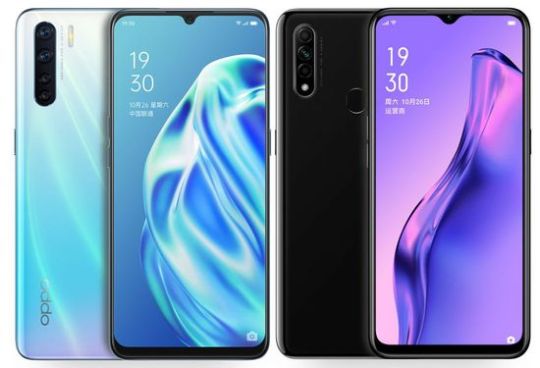
Oppo A5s
Series A includes mid-budget smartphones. In April 2019, Oppo launched the A5s.

The model uses a 6.2-inch InCell IPS display (92% sRGB and 68% AdobeRGB) with 720 x1 520 resolution (271 ppi density), 8-core Helio P35 (4 x Cortex-A53, 2.3 GHz + 4 x Cortex-A53 , 1.8 GHz) chipset with PowerVR GE8320, RAM 2/3/4 GB and 32/64GB Storage. As known, in 2018 Xiaomi first installed Helio P35 on Mi Play. In fact, it replaced the not-so-popular Helio P30. According to the company, today it produces P35, P60, P70 and P90 using the 12nm FinFET (fin field-effect transistor) process technology from TSMC, which provides a significant reduction in energy consumption. In addition, the company offers CorePilot technology to optimize energy consumption. Additionally, the P35 supports AI functionality. In addition, the smartphone has an 8MP front-facing camera with f/2.0, and double camera system (13MP + 2MP with f/2.2 and f/2.4).
Oppo A8 and Oppo A91
In December, in China, the company introduced two more models of this series, including the A91 and A8.

The Oppo A8 uses a 6.5-inch IPS display with 1600 x 720 resolution (270 ppi density), an octa-core MediaTek Helio P35, triple camera system (12 MP, f/1.8, wide, PDAF + 2 MP, f/2.4, 1/5",1.75µm, macro camera + 2 MP, f/2.4, 1/5", 1.75µm, depth sensor) and 8 MP, f/2.0 selfie camera, 4GB RAM, 128 GB storage, a fingerprint scanner and a 4230 mAh battery. In addition, it supports 2 SIM cards. The Oppo A91 has a 6.4-inch AMOLED screen with 2400 x 1080 resolution (408 ppi density), 12nm 8-core Mediatek Helio P70 (ARM big.LITTLE architecture - 4 x Cortex A73, 2.1 GHz + 4 x Cortex A53 , 2.0 GHz) chipset with Mali-G72 MP4 GPU, four camera system (48 MP, f/1.8, 26mm, (wide) 1/2.0", 0.8µm, PDAF + 8 MP, f/2.2, 13mm (ultrawide), 1/4.0 ", 1.12µm + 2 MP, f/2.4, 1/5", 1.75µm (dedicated macro camera) + 2 MP, f/2.4, 1/5", 1.75µm, depth sensor) and 16 MP, f/2.0, 26mm (wide), 1/3.1", 1.0µm selfie camera, 8GB RAM, 128 GB storage, fingerprint (under display, optical), accelerometer, gyro, proximity, compass and Li-Po 4025 mAh battery. The cost of A5s and A8 varies in the range of $ 150-170. The price of A91 reaches almost $ 300 in China.
F Series
The models in this series use the innovative AI SelfieTune integrated face recognition technology. The company first used it in an Oppo F5. Oppo F7 (Selfie Expert) uses the second generation of AI SelfieTune 2.0. In particular, it recognizes and optimizes 296 reference points on the face, which exceeds the first version by 20%. In 2019, the company introduced the Oppo F11 and Oppo F11 Pro.
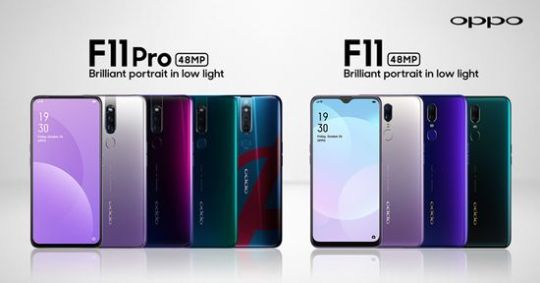
Both models work under Android 9.0 Pie. They use a 6.5-inch LTPS IPS LCD display with 2340 x 1080 resolution (397 ppi), an 8-core Mediatek Helio P70 and dual camera system (48MP + 5MP). But the F11 Pro uses a motorized pop-up 16MP front camera that automatically rises above the panel.
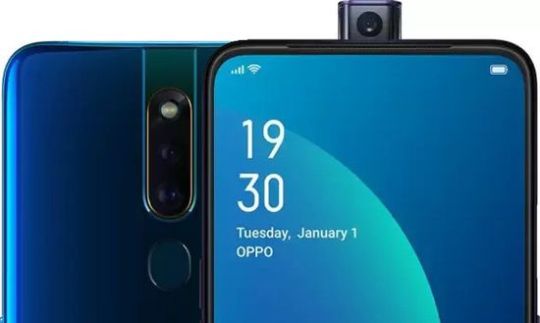
The F11 selfie camera does not have this feature.
Oppo K Series
In 2018 the company introduced the first Oppo K1 smartphone, and in 2019 - Oppo K3 and Oppo K5. Both models support DC Dimming technology, which reduces the flickering the AMOLED displays due to low PWM. As known, DC Dimming eliminates flicker, reducing eye strain, but can distort color reproduction. In fact, Oppo K3 is an improved version of last year's K1.
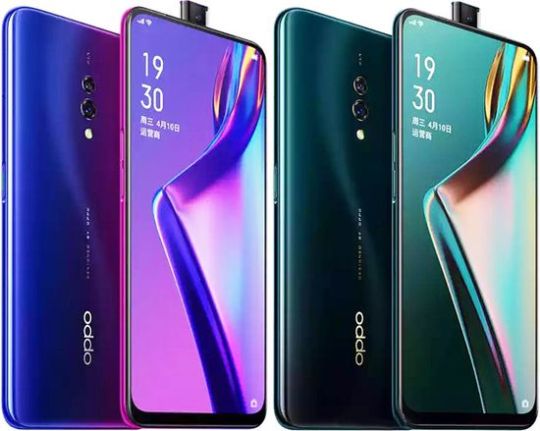
The model uses a 6.5-inch AMOLED display with 1080 x 2340 resolution (394 ppi density), 10nm Qualcomm Snapdragon 710 octa-core (2 x Kryo 360 Gold (Cortex-A75), 2.2 GHz + 6 x Kryo 360 Silver (Cortex-A55) , 1.7 GHz) with Adreno 616, 6GB RAM, 64GB storage, 16MP f/1.7 + 2MP f/2.4 (dual main camera) and built-in 16MP retractable selfie camera with f/2.0, 3765 mAh battery, has a fingerprint scanner, supports 2 SIM cards, SlowMotion and VOOC 3.0 flash charge. High performance, efficient throttling (algorithm to protect the processor from overheating by skipping work cycles), high battery life, DC Dimming and wide color coverage are pros of this model. Unfortunately, the model does not have an NFC module (Near field communication) and a microSD slot. Model costs $ 350-400. The Oppo K5 targets the Indian market and costs about $ 100 less.
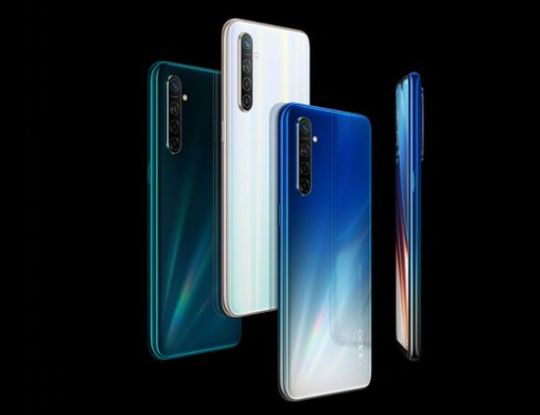
The model uses a 6.4-inch AMOLED display with 1080 x 2340 resolution (402 ppi density), the newer 7nm 8-core Qualcomm Snapdragon 730G (2 x Kryo 470 Gold (Cortex-A76), 2.2 GHz + 6 x Kryo 470 Silver (Cortex- A55), 1.8 GHz) with Adreno 618, 6GB RAM, 128GB storage, four camera system (64MP + 8MP + 2MP + 2MP) with autofocus and OIS, 32MP selfie camera, Li-Po 4000 mAh battery. Of course, it has a set of traditional sensors.
Oppo Reno
The company is positioning Oppo Reno as a sub-brand, with high hopes for it. Oppo Reno and Reno 10x Zoom were the first models of the new series.
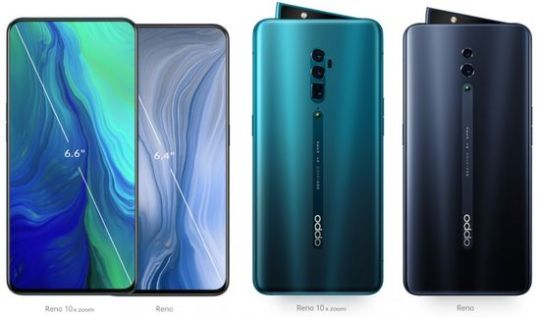
In terms of price and specs, the Reno 10x Zoom competes with the Huawei P30 Pro. Smartphones work under Android 9 Pie with ColorOS 6 interface. Like K3, Oppo Reno uses a 10nm 8-core Qualcomm Snapdragon 710 (2 x Kryo 360 Gold (Cortex-A75), 2.2 GHz + 6 x Kryo 360 Silver (Cortex-A55), 1.7 GHz) with Adreno 616. But Reno 10x Zoom has a more powerful 7nm 8-core Qualcomm Snapdragon 550 (1x Kryo 485, 2.84 GHz + 3 x Kryo 485, 2.42 GHz + 4 x Kryo 485, 1.78 GHz). Oppo Reno uses a dual camera system (Sony IMX586 48MP sensor with f/1.7 and OIS, and an 8MP sensor with f/2.2) and a built-in 16MP retractable selfie camera without flash. This design many often call shark fin. But Reno 10 x Zoom has an additional periscope telephoto lens with a 10x hybrid zoom. Moreover, its resolution reaches 13 MP vs 8 MP in the Huawei P30 Pro. Oppo Reno uses a 6.4-inch FullHD+ AMOLED display with 2340 x 1080 resolution (402 ppi), with Corning Gorilla Glass 6 and support for DCI-P3 standard. In general, the list of its pros includes a design with shark fin, a good display, fast VOOC 3.0 charging and a fairly high shooting quality. The Reno 10x Zoom has a 6.6-inch display (387 ppi density) with similar specifications. Today, its price varies in the range of $ 600-700 (6GB RAM, 128GB storage / 8GB RAM, 256GB storage). Of course, 6.6-inch display and an excellent telephoto lens with a 10x hybrid zoom are its main pros.
Oppo Reno2, Reno2 F и Reno2 Z
Of course, they all have pop-up selfie cameras to provide edge-to-edge displays.
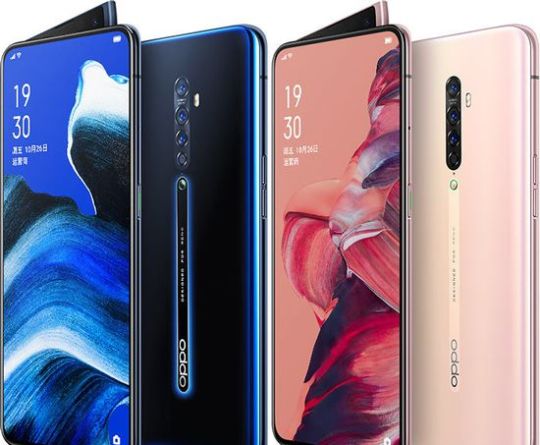
All models use almost identical frameless AMOLED capacitive touchscreens which is protected by Gorilla Glass 6 technology. Reno 2 and Reno 2 F have 6.5-inch screens with 1080 x 2400 (401 ppi) and 1080 x 2340 (394 ppi) resolutions, respectively, and Reno 2 Z have a 6.53-inch screen with 1080 x 2340 resolution (395 ppi). All phones use the traditional four camera system.
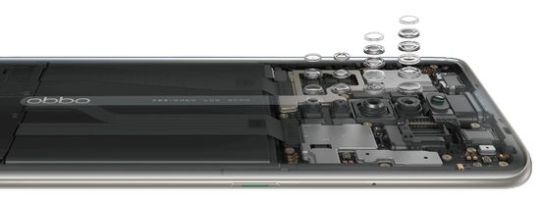
But their systems differ slightly in modules. For example, Reno2 received a 13MP telephoto lens.

The Reno2 F and Reno2 Z cameras are almost identical.
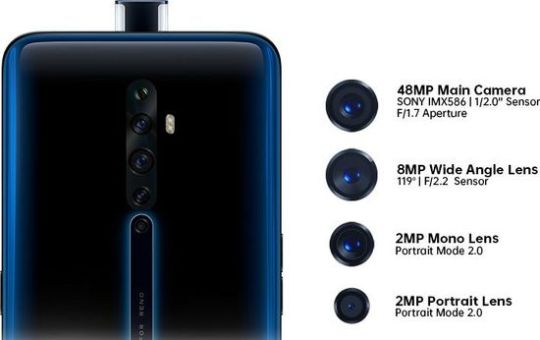
But models have different chipsets. In particular, Reno2 uses an 8nm Qualcomm Snapdragon 730G (2 x Kryo 470 Gold, 2.2 GHz + 6 x Kryo 470 Silver, 1.8 GHz) with an Adreno 618 GPU, Oppo Reno2 F - 12nm Mediatek Helio P70 (4 x Cortex-A73, 2.1 GHz + 4 x Cortex-A53, 2.0 GHz) with Mali-G72 MP3, Reno2 Z - 12nm Mediatek Helio P90 (2 x Cortex-A75, 2.2 GHz + 6 x Cortex-A55, 2.0 GHz) with PowerVR GM9446. Of course, Qualcomm Snapdragon 730G performance is higher compared to Mediatek, but Helio P70 and P90 are also very powerful chipsets. All models have 8 GB of RAM, VOOC Flash Charge 3.0 function and 4000 mAh Li-Po battery. PROS - good 6.5-inch screen with Gorilla Glass 6; - 8GB RAM; - 13MP telefoto lens and Qualcomm Snapdragon 730G in Reno2; - shark fin; - Dolby Atmos sound. Cons - no NFC module in Reno2 F and Reno2 Z; - no wireless charging.
Oppo Reno Ace
In October 2019, Oppo released inexpensive flagship Reno Ace.
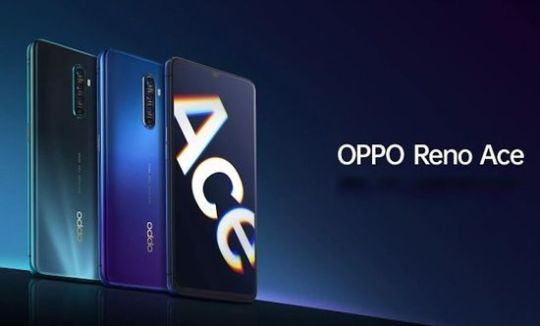
The novelty supports SuperVOOC Fast Charge 2.0 technology of high-speed charging power of 65 watts, which provides charging 4000 mAh battery in only 30 minutes. In addition, the model uses the latest Qualcomm Snapdragon 855 Plus. This SoC integrates a fast 'Prime Core' that clocks up to 2.96 GHz (up from 2.84 GHz in the 855), three further fast ARM Cortex-A76 performance cores, which can reach up to 2.42 GHz, four power-saving ARM Cortex- A55 cores that clock up to a maximum of 1.8 GHz, and Adreno 640 GPU. Of course, today 855 Plus is the most powerful chipset in this segment. Moreover, the Adreno 640 delivers a 15% increase in productivity. In addition, the model uses a 6.5-inch AMOLED display with 1080 x 2400 resolution (405 ppi density), 8GB RAM, 256GB storage, four camera system (48MP + 13MP + 8MP + 2MP) with autofocus and OIS and 16MP selfie camera. Of course, the model has a full range of traditional sensors and options, including ColorOS, dual SIM support and fast charging. Its estimated price varies around $ 450. Considering the 6.5-inch AMOLED screen, a camera with 48MP Sony IMX586 sensor, Snapdragon 855 Plus and SuperVOOC Fast Charge 2.0, the model claims to be BestSeller in the segment of inexpensive flagships.
Oppo Reno 3 and Reno 3 Pro
In 2020, Oppo released Reno 3 with MediaTek 5G SoC and Reno 3 Pro with the latest Qualcomm Snapdragon 765G & 5G Connectivity.
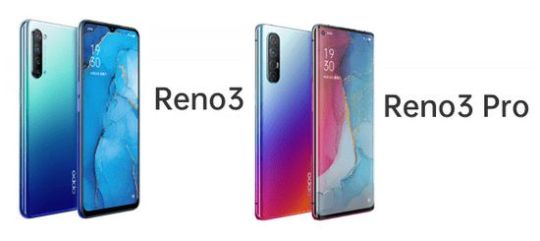
Both models work under running under Android 10 + ColorOS 7. OPPO Reno3 Pro 5G uses a 6.5-inch Full HD+ AMOLED screen with 2400 x 1080 resolution (402 ppi density) with support for 90 Hz refresh rate and 97% coverage of NTSC standard, four camera system (48MP Sony IMX586, f/1.7 + 8MP f/2.2, 116 ° + 13MP f/2.4 + 2MP f/2.4) and 32MP (f/2.4) selfie camera, RAM 8/12GB and 128/256 storage. Given its cost of up to $ 500, the model has excellent chances of success.
Conclusion
Innovative focus, including shark fin and SuperVOOC Fast Charge 2.0, high-level components and affordable prices provide good prospects for Oppo phones. Today many consumers make a choice in favor of this brand when buying a smartphone. In addition, the company can gain a foothold in the segment of inexpensive flagships with the help of its very promising Oppo Reno series. The video offers the announcement of the new Oppo F15 Pro. Read the full article
#AISelfieTune2.0#ColorOS7#CorePilottechnology#DCdimmingtechnology#OppoA5s#OppoA8#OppoA91#OppoF11#OppoF11Pro#OppoF15Pro#OppoFindX#OppoK3#OppoK5#Oppophones#OppoReno#OppoReno10xZoom#OppoReno3#OppoReno3Pro#OppoReno2#OppoReno2F#OppoReno2Z#sharkfinphones#SuperVOOCFastCharge2.0
0 notes
Text
The Best Phablets or Large-sized Mobile Phones of 2020
There are many large mobile phones on the market, but which one should you buy? We have selected the best phablets that you can find in stores today taking into account their screen, price and features.
A few years ago, they took small mobiles. Even the first iPhone had a screen of only 3.5 inches, something that today seems very little. The iPhone XS Max, on the other hand, sports a 6.5-inch panel and the difference is undeniable.
But this is not the only smartphone in the large market. In fact, many brands launched models of these characteristics long before Apple: Samsung, Motorola, Huawei, Honor …
This type of mobile is known as phablet, a construction of the English words phone and tablet. It is a good alternative to having to carry the mobile and the tablet on top. We review the best phablets of this year.
Purchase guide for a phablet or large mobile
1. Is size important?
Most phones with a screen larger than 5.5 inches are considered phablets, but the new trend of making longer and narrower smartphones can lead to confusion. This is why in this list we have also included the aspect ratio.
On the other hand, you should keep in mind that not all mobile phones with large screens can be considered “big”. The standard Galaxy S9, for example, could not be considered a phablet despite its 5.7-inch screen because it has a very thin bezel.
On the other hand, the iPhone 8 Plus measures 5.5 inches and yes we can consider it a phablet because it has an aspect ratio of 16: 9 and quite wide bezels. Thus, we can consider a phablet that mobile that requires the use of two hands.
2. What benefits do they have?
The most obvious benefit of a phablet is the size of its screen, which allows you to watch movies and series on your mobile in a much more comfortable way. You can also appreciate more the details of the photos you take with him.
On the other hand, large-sized mobiles often also include a larger capacity battery. Although they usually also consume more energy due to having more screen, this means that you can enjoy your smartphone for more hours.
The best phablets of 2020
1. Samsung Galaxy Note 10+
From $ 1,099
Screen: 6.8 inches
Aspect Ratio: 19: 9
There is no doubt: the Galaxy Note 10+ is one of the best smartphones Samsung has ever manufactured. It presents improvements over Note 9 that are welcome, such as the reduction of the bevel.
The Infinity-O screen is large and looks great on the elegant and sophisticated body of this terminal. Compared to the standard model, it has a greater storage capacity, depth sensors and faster loading.
Now, the Note 10+ is not perfect, and we are disappointed that Samsung has decided not to include a headphone jack port. Nor do we finish convincing some new functions such as Air Actions.
2. OnePlus 7 Pro
From $ 669
Display: 6.67 inches
Aspect Ratio: 19.5: 9
Few hits can be found in the OnePlus 7 Pro, with a screen, cameras and first-class specifications. What is missing, and that we do find in other smartphones, is justified with its most affordable price.
This is the case, for example, of the non-compatibility with wireless charging or that OnePlus has not given it a certification of resistance to water and dust. Even so, you can compete face to face with the latest Samsung and Huawei models.
That the price is cheaper does not mean, however, that it is super cheap. Also, on launching the OnePlus 7 Pro costs a little more than you might expect. If you want something more affordable, you can opt for the OnePlus 7.
3. Asus ROG Phone 2
From $ 899
Display: 6.59 inches
Aspect Ratio: 19.5: 9
Lately, Asus is doing very well in terms of smartphones for gamers. The ROG Phone 2 has incredible specifications and a design that will really only convince those who want an authentic gaming look.
If you want, you can opt for a more classic Android interface, but little can be done about the exterior design. However, the most interesting thing is what is inside: Snapdragon 855+ processor, 120 Hz display and 6000 mAh battery.
It also includes features such as Air Triggers, AeroActive Cooler II and Game Genie. The cameras are also pretty good, although you probably don’t want this phone to take pictures. And all this at a fairly reasonable price.
4. Google Pixel 3 XL
From $ 599
Display: 6.3 inches
Aspect Ratio: 18.5: 9
If you think that you will not mind the rather large notch of this mobile, then the Google Pixel 3 XL is undoubtedly the best large mobile that you can find in the market today.
On the day of its launch, the Pixel 3 XL had the best cameras of any other smartphone for sale at that time. In the rear, we find a 12.2 MP lens, while in front there is an 8 MP dual camera.
In addition, few things have to be objected to the software it uses, it has a battery autonomy rather than decent and comes with a well-calibrated OLED panel that measures 6.3 inches and looks 18.5: 9.
5. Samsung Galaxy S10 Plus
From $ 999
Although the entire Galaxy S10 range is excellent, we prefer the smartphone in its large version. The price of the Samsung Galaxy S10 Plus is not available to everyone, but we do not find such a power in any mobile.
The Galaxy S10 Plus can boast the best screen ever seen on a mobile phone, at least at the time it was launched. It highlights the company’s decision to get rid of the notch.
Instead, Galaxy has pierced the upper right corner of the screen and placed the two front camera lenses there. In the back, we find a very versatile triple camera that achieves excellent results.
6. Xiaomi Mi Note 10
From $ 549
Display: 6.47 inches
Aspect Ratio: 19.5: 9
The Xiaomi Mi Note 10 has surprised us for good. With this smartphone, the Chinese company takes a step forward especially when it comes to design and finishes. In addition, changes in the interface are palpable, significantly better.
But if there is something that stands out above all in this Mi Note 10 are its cameras. This mobile has five lenses in the rear, led by the main sensor of 108 MP. The photographic results in environments with good light are really incredible.
It also surprises the great battery autonomy of this Xiaomi mobile, as well as its fast charging capacity. You will reach 80% charged battery in just 40 minutes. Luckily, it still does not support wireless charging.
7. Huawei P30 Pro
From £ 899 (128GB), £ 1099 (512GB)
Display: 6.47 inches
Aspect Ratio: 19.5: 9
With the P30 Pro, Huawei has once again manufactured a fantastic flagship that has revolutionized photography in mobile telephony. This smartphone is surely the one with the best cameras on the market.
To all this is added an excellent performance, a battery life that will last hours and hours and degraded finishes with vibrant colors that you will love. The Huawei P30 Pro has it all.
It is also noteworthy that the P30 series was announced before the commercial war between the United States and China began. Thus, Google will continue to offer its services, applications and security updates for this mobile.
8. Oppo Reno 10x Zoom
To be confirmed
Screen: 6.7 inch
Aspect Ratio: 19.5: 9
The Oppo Reno 10x Zoom has many similarities with the OnePlus 7 Pro, but in this case a bit of screen quality is sacrificed to enhance the cameras. It also has good battery and high level specifications.
There is little to object to a fairly affordable smartphone with Snapdragon 855 processor and a screen without notch that occupies the entire front surface. Of course, the AMOLED screen has a resolution of only 1080p.
The highlight of the Reno 10x Zoom is the triple rear camera, with a main lens of 48 Mp, an ultra wide angle of 8 Mp and a telephoto lens of 16 Mp, which offers an optical zoom of up to 5 magnifications.
9. iPhone 11
$ 699 (64GB), $ 749 (128GB), $ 849 (256GB)
Screen: 6.1 inches
Aspect Ratio: 19.5: 9
The latest generation of iPhones arrived last September and, how could it be otherwise, the iPhone 11, 11 Pro and 11 Pro Max soon became part of our lists of best smartphones of the year.
We have decided to include the iPhone 11 here because of the successful changes it has made regarding the iPhone XR, although it is not perfect. One of the main changes is the rear camera, which now has two lenses that improve photographic results.
Another of the changes that attracts the most attention, at least with the naked eye, is the new range of pastel colors in which it is available. Logically, the iPhone 11 is also faster and more powerful thanks to the A13 Bionic processor.
10. Moto G7
From $ 299
Screen: 6.2 inches
Aspect Ratio: 19: 9
If you want a cheap mobile with a big screen, your best option will be to bet on the Moto G7. In addition, you will not have to give up some of the best features in the market, since this model has specifications similar to those of more expensive mobiles.
Of course, you should give up some screen quality and resolution, which is 2270 x 1080. Still, you will not find a better smartphone with a large screen and decent performance that does not cost a fortune.
It is a pity that the Moto G7 will not appear in more phone ratings that are worth taking into account, and more if we keep in mind that those that will come out cost a lot more and have a similar power.
from WordPress https://ift.tt/3anATQY via IFTTT
0 notes
Link
Let us start this review with a very small story. A company enters a crowded Indian smartphone space that is bustling with the competition, local and international brands included. A little less than two years down the line, the company has made its way to the top five brands in the Indian smartphone market.
In case you haven’t guessed the name of this company, it’s Realme.
Realme, as a relatively new smartphone brand, has had a dream run so far. The once an Oppo-sub-brand has quickly risen to the select few top brands with a bunch of smartphone launches.
The company’s current portfolio of smartphones has been flooded with frequent launches, most of them being in the budget categories. Realme’s mantra has been ‘Dare to Leap’, and the company is now aiming higher with the Realme X2 Pro.
Touted as the new ‘Flagship Killer’, the Realme X2 Pro comes loaded with top-of-the-line specifications and some first-in-category as well. To give you a teaser, Realme claims that the Realme X2 Pro can charge its 4,000 mAh battery within 35 minutes. But, in my short experience with the smartphone, I would say that the company’s being modest. I’ll get to the battery a bit later as we first need to examine the might of this beast of a device.
Realme X2 Pro Specifications
Display: 6.5-inch Super AMOLED with a 90Hz high refresh rate and a 91.7 percent screen-to-body ratio.
Rear camera:
- 64MP primary camera with an f/1.8 aperture.
- 8MP f/2.2 ultra-wide lens with a 115-degree field-of-view that doubles as a macro lens.
- 13MP f/2.5 sensor with 2x optical zoom, 5x optical hybrid zoom and up to 20x digital zoom.
- 2MP Portrait lens.
Front Camera: 16MP f/2.0 sensor
Processor: Qualcomm Snapdragon 855+ SoC with Adreno 640 GPU for graphics
RAM and Storage: 8GB + 128GB UFS 3.0 and 12GB + 256GB UFS 3.0 variants.
Battery: 4,000 mAh with 50W SuperVOOC Flash Charge.
The spec-sheet does look impressive on paper, and it reflects in the real world as well.
Here’s our review of the Realme X2 Pro:
Realme X2 Pro Design and Display
Holding the Realme X2 Pro gives a premium feel, thanks to the glass-metal sandwich design. The smartphone is a gram less than 200 but doesn’t feel that heavy.
Upfront, the smartphone has a 6.5-inch Super AMOLED display with a tiny water-drop notch on top and a 20:9 aspect ratio. The side bezels are narrow whereas the chin is a bit thicker. High chances that you might mistake the Realme X2 Pro as the OnePlus 7T due to a very close resemblance.
The Full HD+ flat display is crisp and bright, and we did not face any issues while using the smartphone in outdoor conditions. Realme X2 Pro’s display also supports HDR10+, which means you can enjoy viewing content on Netflix, YouTube or Amazon Prime with better and higher color accuracy.
Colors are saturated and a little punchy under the Vivid screen color mode. The color temperature is also neutral and leans a bit towards the cooler side. You can adjust the color temperature inside the display settings between cool, default and warm.
Realme X2 Pro is the first smartphone in its price range to offer a 90Hz refresh rate display. You find the same smooth refresh rate on the OnePlus 7T, which is priced higher.
A 90Hz refresh rate offers a silky-smooth experience while scrolling through your social media feed. Even if you are someone who is not-so-tech-savvy, you will notice that perceived speed bump over your previous smartphone with a 60Hz display. You can switch between 60Hz and 90Hz in the display settings and also select which apps can make use of the faster refresh rate.
Turn the Realme X2 Pro around, and there’s an awkwardly-placed Realme logo placed next to the vertically-aligned quad-camera setup. While looks may be subjective, we personally didn’t like the logo placement. The camera module protrudes, and it is advised to use the case offered inside the box.
The power button is placed on the right side, whereas the volume buttons are on the left. At the bottom edge, there’s the USB Type-C port, a speaker grille, and the 3.5mm headphone jack.
Realme X2 Pro Camera
Smartphones that claim to be a ‘Flagship Killer’ often lag in the camera department. In Realme X2 Pro’s case, the results so far have been at par with the likes of OnePlus 7T, Reno 2 (Review) and some other flagships.
There’s a quad-camera setup with a 64MP f/1.8 primary sensor, an 8MP ultra-wide, a 13MP 2x optical telephoto lens, and a 2MP Portrait lens.
The camera app has three different modes: Video, Photo, and Portrait. The other modes, like Ultra 64MP, Nightscape, Ultra Macro, etc. can be found in the menu icon on the left of the Video option. Above the viewfinder, there’s a row for camera settings, HDR, ultra-wide, Chroma Boost, flash, etc. To switch between the lenses, there is a toggle which can be tapped to select ultra-wide, 1x, 2x and 5x zoom.
Realme X2 Pro uses 4-in-1 pixel binning to convert 64MP images into 16MP. Pictures that were taken using the main sensor offered impressive levels of detail and excellent dynamic range.
The colors aren’t oversaturated and look very natural. If you want that Instagram-ready image with some defined colors, there’s a Chroma Boost option on the top that bumps up the saturation a bit.
Another highlight feature of the Realme X2 Pro’s camera, apart from the 64MP main sensor, is its telephoto lens. The 13MP telephoto sensor can shoot up to 2x optical zoom, 5x optical hybrid zoom, and 20x digital zoom.
You can get a good amount of crisp and detailed images while using the telephoto lens in 2x and a bit less in 5x zoom. However, the sharpness and color levels deteriorate a bit as you zoom in further.
At 20x zoom, things may get blurry if you do not keep your hands still and steady while holding the smartphone. Also, using telephoto after 5x zoom may not be your best bet to get accurate colors and details.
There is distortion in ultra-wide shots but not a lot. You’ll notice some noise and lack of sharpness on the edges of ultra-wide images shot on Realme X2 Pro.
The 13MP sensor is very close to matching the color temperature and accuracy of the main camera. The same ultra-wide sensor doubles up as a macro lens for shooting tiny objects with a considerable amount of detail.
There’s also a night mode called ��Nightscape’ on the Realme X2 Pro. It basically clicks multiple shots on the same frame within those couple of seconds to get maximum detail.
The camera performs well as images offer enough detail with some decent noise reduction. You’ll see a bump in exposure and highlights. I did notice some noise and loss of detail in the darker areas of the image when there wasn’t an ample amount of light. The sharpness, too, is increased in a bid to extract most details.
Portrait mode has a good amount of detail and bokeh. Keep in mind that by default, the bokeh is set to 60 percent and you can set it as per your preference. Edge detection, too, was on point, except a couple of instances where the edges of the hair and ears got blurred.
The front camera has a 16MP f/2.0 sensor. If you love clicking selfies, the X2 Pro won’t disappoint you. The phone clicks close to real selfies. I didn’t notice any kind of skin softening or smoothening with the ‘beauty’ mode off. However, the exposure was a bit on the higher side, resulting in a slightly fairer skin tone.
Realme X2 Pro Performance
We have already listed out the spec-sheet above, and it is pretty clear that the Realme X2 Pro is a powerhouse. With up to 12GB RAM paired with the Qualcomm Snapdragon 855+, it is evident that the Realme X2 Pro will offer smooth performance. For even better performance, Realme X2 Pro comes with Game Space that offers various enhancements and adjustments that can be done for better gameplay.
We tried Team Death Matches in Call of Duty and PUBG where the graphics loaded in HD and frame rate were set to ‘High’ by default. Realme X2 Pro supports HDR graphics and the ‘Extreme’ frame rate in PUBG. Needless to say, there was no lag or stutter while playing the Battle Royale games. We changed the settings to HDR graphics with the 'Extreme' frame rate to push the performance to its extreme. The device did feel warm after 10-15 minutes of gameplay, after which I switched to HD settings and a 'High' frame rate.
Realme X2 Pro features up to 256GB internal memory with UFS 3.0 storage standards, ensuring faster read-write speeds. Battery life is impressive, even with a 90Hz refresh rate. We managed to get a bit over a day’s juice after playing some games, music, scrolling through Instagram and Twitter and clicking stories on Snapchat.
Even if you run out of juice, there is this mind-blowing 50W SuperVOOC Flash charger inside the box. It would be hard to believe when you read this, but the Realme X2 Pro charged at a blazing fast speed from 5 percent to 100 in exactly 29 minutes.
That’s a little lesser than what the company claims to refuel the battery from zero to 100 percent in 35 minutes. Undoubtedly, the Realme X2 Pro is a champion in its segment. The battery charges way faster than the OnePlus 7T’s 30T Warp charge and Redmi K20 Pro’s 27W Sonic charge.
Coming to the biometrics, there’s an in-display fingerprint scanner that is quick, and among the fastest, we feel. As an alternative, Realme X2 Pro also supports face unlock which is fast to authenticate but not secure enough.
The speakers, too, are loud and clear. There’s a primary speaker at the bottom edge, and the large earpiece doubles up as a secondary speaker.
Realme X2 Pro Software
Realme X2 Pro boots on Android 9 based Color OS 6.1. The infamous skin is known for its bloatware and preloaded third-party apps. Realme should’ve considered launching the X2 Pro without any bloatware for offering a true flagship software experience.
Other than GameSpace, Color OS 6.1 comes with features like ‘Smart Driving’ and ‘Smart Riding’ mode. The custom skin also offers various types of gestures and navigation keys. Color OS also features Digital Wellbeing, which is focused on informing users about the time they spend on various apps and how to reduce smartphone usage.
Realme X2 Pro should get the upcoming Color OS 7 software update soon.
Realme X2 Pro Verdict
If there’s one word for describing the Realme X2 Pro, it’s ‘Butter-Smooth’. A superior performance unit, faster storage, 90Hz refresh rate display, great battery life with super-fast charging ensures you a value-for-money experience. Add to it the quad-cameras that offer a versatile set of focal lengths with great pictures.
The Realme X2 Pro is the company’s first approach towards the flagship experience in the right direction. A flagship experience with top-of-the-line specs and the latest features under Rs 30,000 make it quite obvious for one to recommend the Realme X2 Pro.
While the operating system may be its weakest link at the moment, the upcoming ColorOS 7 update which is claimed to offer close to stock Android experience should better the user experience.
Realme X2 Pro competes against the OnePlus 7T (Review), Asus 6Z, and the Redmi K20 Pro. Among the three competitors, the OnePlus 7T gets closest to the X2 Pro but is priced higher.
Redmi K20 Pro (Review) and Asus 6Z are great devices, but a late-launch has allowed Realme to pack the best and latest features in its first flagship device.
To sum it up, if the competitors are flagship killers, the Realme X2 Pro is the king of these flagship killers. Get access to India's fastest-growing financial subscription service Moneycontrol Pro for as little as Rs 599 for the first year. Use the code "GETPRO". Moneycontrol Pro offers you all the information you need for wealth creation including actionable investment ideas, independent research and insights & analysis For more information, check out the Moneycontrol website or mobile app.
0 notes
Text
Oppo Reno 4 Pro Quick review of the mobile Oppo has announced its new phones in the Reno series, to join the Oppo Reno 4 and Oppo Reno 4 Pro to the series, so that the Reno 4 Pro is the latest version of the previous version, the Oppo Reno 3 Pro while addressing the most important defects that it was missing The phone, where the charging capacity has been developed to become much better, as the phone supports 65W charging and made the screen support the 90Hz refresh rate with its support for HDR10 for better performance, especially in games, but is this all that was developed in the phone?! Let's get acquainted with the full specifications of the Oppo Reno 4 Pro phone, what are its most important advantages and disadvantages, and is it worth buying, or are there other phones that will be better for the Oppo Reno 4 Pro, especially with the arrival of the phone at a high price, so let us find out about it as follows.
Oppo Reno 4 Pro Quick review of the mobile Oppo has announced its new phones in the Reno series, to join the Oppo Reno 4 and Oppo Reno 4 Pro to the series, so that the Reno 4 Pro is the latest version of the previous version, the Oppo Reno 3 Pro while addressing the most important defects that it was missing The phone, where the charging capacity has been developed to become much better, as the phone supports 65W charging and made the screen support the 90Hz refresh rate with its support for HDR10 for better performance, especially in games, but is this all that was developed in the phone?! Let’s get acquainted with the full specifications of the Oppo Reno 4 Pro phone, what are its most important advantages and disadvantages, and is it worth buying, or are there other phones that will be better for the Oppo Reno 4 Pro, especially with the arrival of the phone at a high price, so let us find out about it as follows.
Points of interest join the most exact nuances of the phone and that is only the start Oppo Reno 4 Pro * ( cost and subtleties )1-Processor: Octa-focus Snapdragon 720G 8 nano development.2-Amassing/Crush: 256 GB with 8 GB Pummel.3-Camera: Quad back 48 + 8 + 2 + 2 MB. /Front 32 mb.4-Screen: 6.5 creeps with FHD + objective with a little opening.5-Working system: Android 10.0.6-Battery: 4000…

View On WordPress
0 notes
Text
OnePlus Nord Now Available With An Instant Discount Of Rs.1,000 For ICICI Bank Users
OnePlus Nord For An ICICI Bank Clients Will Now Available With An Instant Rebate Of Rs.1,000
The Amazon instant discount is available today at 2 PM for OnePlus Nord. (adsbygoogle = window.adsbygoogle || []).push({}); OnePlus Nord will be accessible for buy in India today with a Rs. 1,000-moment rebate. The markdown offer on the OnePlus Nord will be material for clients making the buy through an ICICI Bank Visa or by means of ICICI credit or check card EMI exchanges. The OnePlus Nord was dispatched in the nation in July. It appeared as the first in the organization's "reasonable cell phone line" and offered highlights, for example, a gap punch show configuration just as quad back cameras. The OnePlus Nord additionally accompanies 5G uphold.
OnePlus Nord rebate offer
The OnePlus Nord is right now accessible with the Rs. 1,000-moment markdown for ICICI Bank clients through the OnePlus.in site. Notwithstanding, the telephone will go at a bargain with the markdown offer by means of Amazon at 2 pm today. The online commercial center likewise offers no-cost EMI for a quarter of a year.
(adsbygoogle = window.adsbygoogle || []).push({});
OnePlus Nord cost in India, accessibility, offers
OnePlus Nord as of now comes in two memory and capacity choices. The price for the Oneplus Nord is estimated at Rs.27,999 for the 8GB+128GB. While the 12GB + 256GB capacity conveys a sticker price of Rs. 29,999. The 6GB + 64GB variation of the telephone will go marked down toward the beginning of September at Rs. 24,999. The OnePlus Nord comes in two shading variations also - Blue Marble and Gray Onyx. (adsbygoogle = window.adsbygoogle || []).push({}); As referenced before, the OnePlus Nord will go at a bargain starting 12 PM today around evening time by means of Amazon.in, OnePlus.in and OnePlus Experience Stores. It will be accessible by means of Reliance Digital and MyJio stores beginning August 7, and the deals will grow to all OnePlus approved stories on August 12.
OnePlus Nord details
(adsbygoogle = window.adsbygoogle || []).push({}); The double SIM (Nano) OnePlus Nord runs on Android 10 with OxygenOS 10.5 on top and has a full HD plus Fluid AMOLED display of 6.44-inches of resolution of 1080 by 2400 pixels with a display refresh rate of 90Hz. The handset is run on the Qualcomm Snapdragon 765G SoC octa-center, operating with up to 12 GB of LPDDR4x RAM. It likewise has up to 256GB of UFS 2.1 capacity that isn't expandable through microSD cards. As far as optics, there is a quad back camera arrangement that incorporates a 48-megapixel Sony IMX586 essential sensor alongside a f/1.75 focal point. The camera series on the telephone likewise houses an ultra-wide-point sensor of 8-megapixel, full-scale camera sensor of 2-megapixel, and a profundity sensor of 5-megapixel. For selfies, there is a double selfie camera arrangement at the front that incorporates a 32-megapixel Sony IMX616 essential sensor and an 8-megapixel auxiliary sensor with an ultra-wide-point focal point. (adsbygoogle = window.adsbygoogle || []).push({}); Availability alternatives on the OnePlus Nord incorporates 5G, 4G, USB Type-C Port for charging, Wi-Fi 802.11ac, and Bluetooth v5.1. The handset is fitted with an in-display fingerprint reader. Plus, it packs a battery capacity of 4,115mAh that further supports Warp 30T Quick Charge technology.
KEY SPECIFICATIONS
DISPLAY
6.44Inch
OS
AndroiD 10
RESOLUTION
1080x2400P
REAR CAMERA
48MP+8MP
+5MP+2MP
FRONT CAMERA
32MP+8MP
STORAGE
64GB
RAM
6GB
BATTERY
4115mAh
PROCESSOR
Snapdragon 765
ALSO SEE
amazon.in
Oppo Reno (8GB RAM, 128GB), Jet Black�� – Click Here To Go The Page
amazon.in
Apple iPhone 7 32GB Black – Click Here To Go To The Page
amazon.in
Oppo Reno 3 Pro (8GB RAM, 128GB), Midnight Black – Click Here
For Regular & Fastest Tech News and Reviews, Follow TECHNOXMART on Twitter, Facebook, Instagram, Google News and Subscribe Here Now. By Subscribing You Will Get Our Daily Digest Headlines Every Morning Directly In Your Email Inbox. 【Join Our Whatsapp Group Here】
(adsbygoogle = window.adsbygoogle || []).push({});
from https://ift.tt/3bWABC7
0 notes
Video
youtube
TOP 5 Best New OPPO Smartphones In 2019. OPPO (2019) Price, Camera, Specifications, Features, Full review #Oppo sports the latest powerful processor about oppo is 2019 best mobile. Buy New Smartphones India ➡ https://amzn.to/2JX2CyS U.s ➡ https://amzn.to/2FW7wag OPPO SMARTPHONE Price & Details OPPO Reno 8GB RAM, 128 GB ➡ https://amzn.to/2VZDx79 Oppo F11 Pro 6G+64GB➡ https://amzn.to/2WD13aY Oppo R17 128GB/8GB➡ https://amzn.to/2WE3lXs Oppo R15 pro➡ https://amzn.to/2I4cJzi OPPO A7 4G+64G➡ https://amzn.to/2OBptig OPPO Find X 128GB 8GB➡ https://amzn.to/2WDIK5w Oppo K1 6G+64G LTE➡ https://amzn.to/2I2dpVX Oppo RX17 Pro➡ https://amzn.to/2CNTM0t #Oppo_2019 #oppo2019 #oppo Top 5 Mobile Name : 5th➡OPPO F9 Pro 4th➡OPPO F11 Pro 3rd➡OPPO K1 2nd➡OPPO R17 pro 1st➡OPPO Reno Subscribe Here "New technology" : https://goo.gl/8KfhiB Share This Video please - https://youtu.be/u_BsI5YLVe4 😀 Follow Us Socially 😀 🌐 Facebook page: https://goo.gl/NFWd51 🌐 Twitter : https://goo.gl/SEiVV2 🌐 Google+ : https://goo.gl/Y1bVLv 🌐 Reddit : https://goo.gl/yrqSez 🔊 LIKE ➡ SHARE ➡ SUBSCRIBE
0 notes
Text
Oppo Reno 3 Pro Review
New Post has been published on https://magzoso.com/tech/oppo-reno-3-pro-review/
Oppo Reno 3 Pro Review
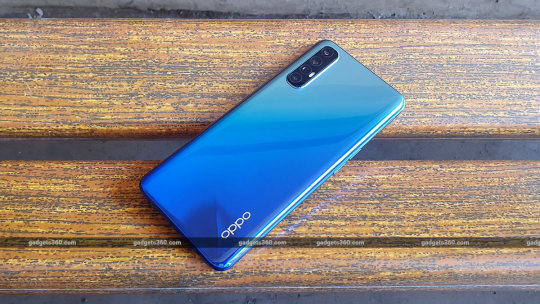
The Oppo Reno 3 Pro was launched in China late last year as a 5G enabled smartphone. Right after the China launch, we saw multiple rumours hinting that this smartphone would soon come to India, but then it seemed as though the Reno 3 Pro making its way to India would be a completely different device that only shares a name with its Chinese equivalent. Oppo finally took the wraps off the Reno 3 Pro earlier this month, and sure enough, a lot of these rumours have been confirmed.
Oppo’s Indian version of the Reno 3 Pro lacks 5G, but is the first smartphone to use the Mediatek Helio P95 SoC. In fact, this SoC was launched just ahead of the smartphone. That’s not all, the Reno 3 Pro also packs a 44-megapixel selfie camera and front depth sensor embedded into the display. With prices starting at Rs. 29,990, this phone goes up against the likes of the Realme X2 Pro (Review). Should you buy the Reno 3 Pro? We review it to find out.
Oppo Reno 3 Pro Design
The Oppo Reno 3 Pro launched in China has a curved-edge display and a single centred hole-punch camera similar to Samsung’s designs. However, the Oppo Reno 3 Pro launched in India features a flat panel with a dual hole-punch for the selfie cameras in the top left corner. The Reno 3 Pro has thin bezels on three sides of the screen while the chin is thicker. It also has an in-display fingerprint scanner, something we would expect from a smartphone at this price.
Oppo has positioned the earpiece just below the frame of the smartphone. The frame feels plasticky to the touch and does not get cold in an air-conditioned room. The back also had the same feel and that doesn’t inspire much confidence, as other devices in this price range use premium materials. All the buttons on the Reno 3 Pro are well-positioned and easy to reach while holding the device in one hand. The SIM tray is on the left of the device and it can hold two Nano-SIMs along with a microSD card.

The Reno 3 Pro has a quad-camera setup
At the bottom, the Reno 3 Pro has a USB Type-C port, 3.5mm audio jack, loudspeaker, and the primary microphone, while the top has the secondary microphone. At the back, the Reno 3 Pro has a compact quad-camera module. While the bump isn’t too wide, it causes the device to rock slightly when placed on a flat surface. Oppo offers the Reno 3 Pro in three colours, Auroral Blue, Midnight Black, and Sky White. We had the Auroral Blue review unit and we liked the gradient finish on it.
We found the finish of our unit to be a fingerprint magnet. We would recommend that you use the clear case that Oppo bundles in the box. The company also ships the Oppo Reno 3 Pro with a 30W VOOC Flash Charge 4.0 charger for fast charging.
Oppo Reno 3 Pro specifications and software
Oppo Reno 3 Pro has a big 6.7-inch AMOLED display with a full-HD+ resolution. Colour output is good and you can tweak the colour temperature. We also found it bright enough to be used outdoors. The display is tall, and reaching the upper edge isn’t very easy when using the phone single-handed. Oppo has also added an in-display fingerprint scanner under the panel.
Powering the smartphone is the brand-spanking-new Mediatek Helio P95 SoC, an octa-core processor clocked at 2.2GHz, paired with 8GB of RAM. The smartphone is available in two storage variants, 128GB and 256GB. You do have the option to expand storage using a microSD card. The base variant is priced at Rs. 29,990 while the higher variant is priced at Rs. 32,990. Oppo currently only has the base variant on sale in India and is expected to bring the 256GB variant here later.
Connectivity options on the Oppo Reno 3 Pro include Bluetooth 5, Wi-Fi, and five navigation systems. The Oppo Reno 3 Pro has two Nano-SIM slots with support for 4G as well as VoLTE. The phone also packs in a 4025mAh battery and supports VOOC Flash Charge 4.0.
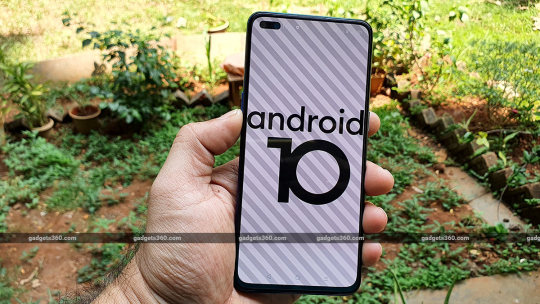
It ships with Android 10 out of the box
The Oppo Reno 3 Pro runs ColorOS 7 on top of Android 10 and our review unit was running the March security patch. The UI is clean and easy to use, with several useful features. Swiping right from the homescreen takes you to the Smart Assistant tab. The smart sidebar has shortcuts to let you capture screenshots and begin screen recording, among other things, and is quite handy. You can use on-screen buttons for navigation or switch to swipe gestures.
Smart driving and riding modes can help reduce distraction by blocking notifications and incoming calls. You can tweak the driving mode so that calls from specific people are automatically answered and routed to the loudspeaker. Digital Wellbeing helps you monitor the time you spend on the device, and includes wind-down and focus mode. To protect personal information, Oppo can show dummy information to apps that ask for access to your contacts and messages.
Just like other Oppo and Realme smartphones, the Reno 3 Pro recommended that we download more apps while setting the device up. We did not install any of these, and in spite of that the Reno 3 Pro still had a fair amount of bloatware. Some apps push spammy notifications when launched, and we would recommend disabling the ones you don’t find useful.
Oppo also preinstalls its Soloop Video Editor on the Reno 3 Pro, which makes it convenient to edit videos for social media platforms.Game Space lets you block notifications while gaming and use both mobile data as well as Wi-Fi to improve online games.
Oppo Reno 3 Pro performance and battery life
Since the Oppo Reno 3 Pro is the first smartphone with the MediaTek Helio P95 SoC we were curious to see how it performs. It managed to deliver good performance without any stuttering or lag. Since our unit had 8GB of RAM we did not face any bottlenecks while multitasking. However, the phone did not feel as fast as some of the other phones we have used in this price bracket, such as the Realme X2 Pro.
We put the Reno 3 Pro through benchmarks to see how this new phone stacks up. First, we ran AnTuTu Benchmarks, in which it scored 225,538 points which is significantly lower than the 459,562 points that the Realme X2 Pro managed. In Geekbench 5’s single-core and multi-core tests, the Reno 3 Pro scored 401 and 1,519 points respectively. This smartphone also managed 47fps and 7.9fps in GFXBench’s T-Rex and Car Chase tests respectively. These scores are lower than those of the Realme 6, which we recently reviewed and which costs half as much as the Reno 3 Pro. Clearly, performance isn’t the strongest attribute of the Reno 3 Pro.
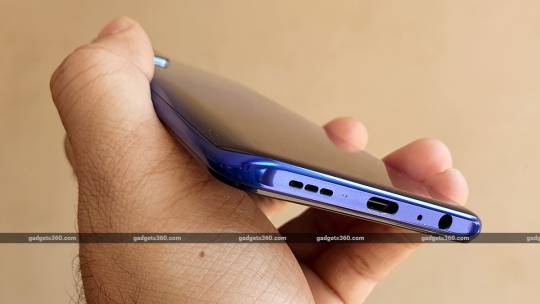
The Reno 3 Pro houses a 4025mAh battery and supports 30W charging
We played PUBG Mobile on the device and it defaulted to the high settings with graphics set to HD and frame rate set to high. The game was playable without any lag or stutter. We played the game for 20 minutes and the device barely got warm to the touch. You should be able to play for long durations on this device without it feeling uncomfortable.
The Reno 3 Pro packs in a 4025mAh battery which is capable of delivering about a day and a half worth of usage from a single charge. In our HD video loop test, the smartphone managed to clock 18 hours and 12 minutes, which is a good score. Using the supplied 30W charger, we were able to charge the device up to 68 percent in 30 minutes, and fully in about an hour.
Oppo Reno 3 Pro Cameras
Premium Oppo smartphones are known for their camera performance, and we were expecting the Oppo Reno 3 Pro to deliver on this front. It packs in a quad-camera setup at the back consisting of a 64-megapixel primary sensor with an f/1.8 aperture, a 13-megapixel telephoto camera, an 8-megapixel ultra-wide-angle camera with a 119-degree field of view, and a 2-megapixel mono camera. The rear camera setup is capable of 5x hybrid zoom and 20x digital zoom. At the front, this phone has a 44-megapixel selfie shooter along with a 2-megapixel depth sensor. Oppo has been heavily advertising this as a “44-megapixel dual camera setup” on the Reno 3 Pro.
The camera app on the Oppo Reno 3 Pro has Night, Portrait, Time-Lapse, Pano and Slo-Mo modes. It has quick toggles for HDR and Dazzle Colour (which bumps up contrast) and shortcuts for different filters that you can apply before taking a shot. AI Scene recognition is on by default and it was quick to detect what we were shooting. You can also take macros using the ultra-wide-angle camera as it has autofocus.
Photos taken in daylight had good amounts of detail, and text at a distance was legible on zooming in. We also liked the dynamic range of shots captured in daylight. The wide-angle-camera helps capture a wider field of view but there is a considerable drop in quality when compared to the primary camera. Shots taken with the telephoto camera were sharpened which was visible on zooming into the image. 5x hybrid zoom offers decent details too.
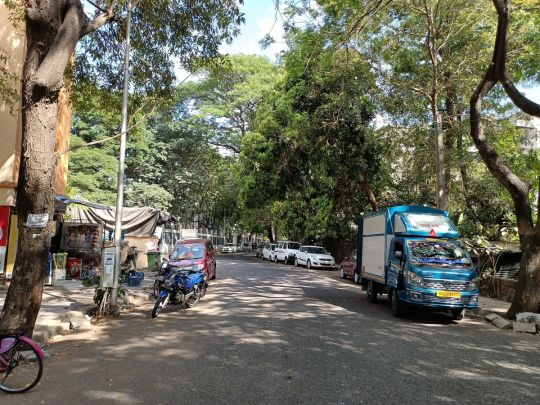
Oppo Reno 3 Pro daylight sample (tap to see full-size image)
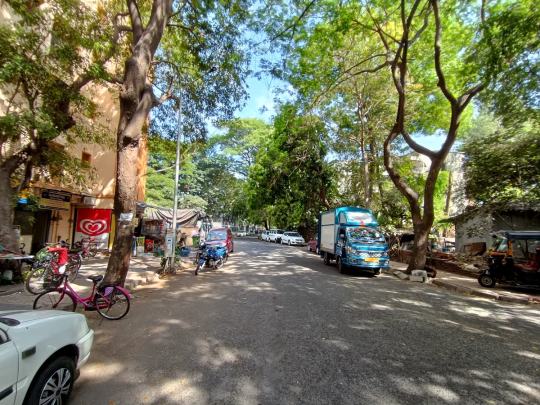
Oppo Reno 3 Pro daylight wide-angle sample (tap to see full-size image)

Oppo Reno 3 Pro daylight telephoto sample (tap to see full-size image)
Close-ups shot with the Oppo Reno 3 Pro turned out quite well and the smartphone manages to lock focus very quickly. Portraits also looked good, and the phone managed good edge detection. It also lets you set the level of blur before you take the shot.

Oppo Reno 3 Pro close-up sample (tap to see full-size image)

Oppo Reno 3 Pro portrait sample (tap to see full-size image)
Photos taken in low light had decent quality but you will notice grain on zooming in. The wide-angle camera offers a wider view but at the cost of detail. The night mode on the Oppo Reno 3 Pro produces brighter images with better details.
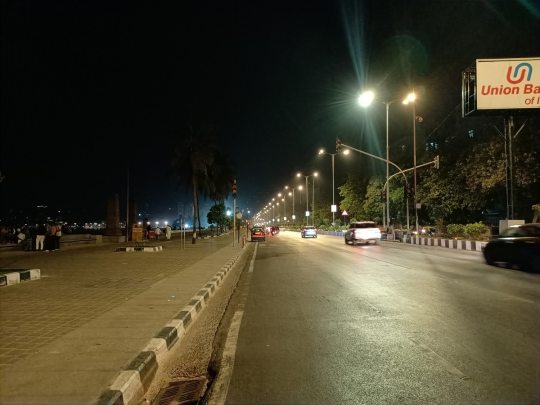
Oppo Reno 3 Pro low light sample (tap to see full-size image)
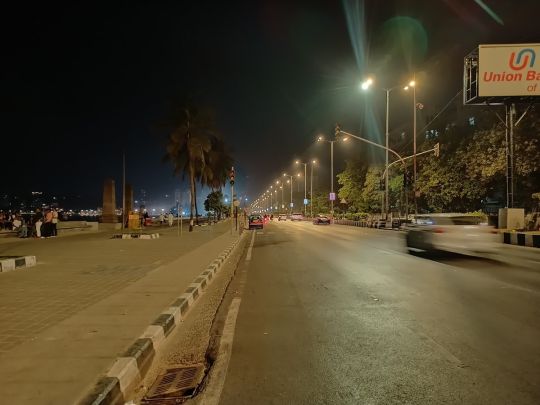
Oppo Reno 3 Pro Night mode sample (tap to see full-size image)
The Oppo Reno 3 Pro captures good selfies but these weren’t as detailed as what we’ve seen from some of the other phones we’ve tested. Beautification is enabled by default, but you do have the option to turn it off completely. You can also shoot selfie portraits thanks to the secondary front camera. The Reno 3 Pro managed good edge detection and blurred out backgrounds correctly. We noticed some lag in the viewfinder before taking shots.

Oppo Reno 3 Pro selfie sample (tap to see resized image)
Video recording maxes out at 4K for the primary camera while the selfie shooter is restricted to 1080p. You do have the option to shoot using the different cameras and can also switch while a video is being recorded. Video taken in daylight was well stabilised at 1080p, however 4K footage wasn’t stabilised. In low light, we noticed a slight shimmer effect in the output. There is a super-steady mode as well which stabilises video better, but we noticed a focus hopping issue in low light.
Verdict
The sub-Rs.30,000 segment has been buzzing for a while now, not only because of new launches but also from high-end devices that have gotten price cuts. This segment is slowly getting competitive again, with value-for-money options such as the Realme X2 Pro (Review) which not only packs a powerful Snapdragon 855+ but also has a 90Hz panel. The Asus 6Z (Review) is another device which has a Snapdragon 855 SoC and is now available for under Rs. 30,000.
In comparison, the Oppo Reno 3 Pro does not offer the same kind of performance. Its relatively weak processor is evident in our benchmarks. However, it isn’t terrible for everyday use, and if you aren’t a power user, you won’t really notice the difference. Camera performance is decent for the price, but this phone could do with a few tweaks to improve video quality in low light. You can consider the Reno 3 Pro for its camera capabilities, but if you are looking for the maximum value for your money, the Realme X2 Pro should be your pick.
0 notes